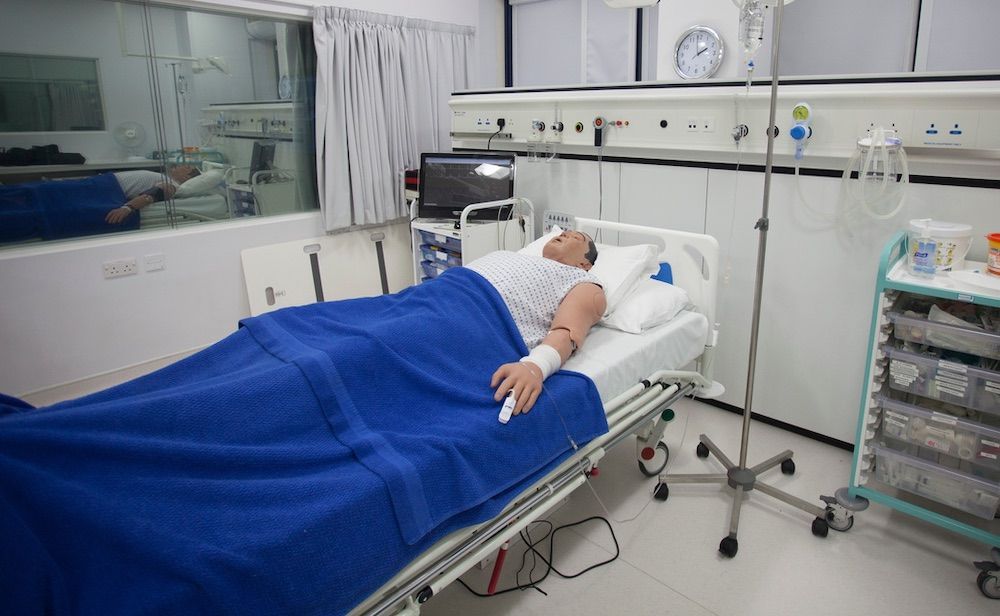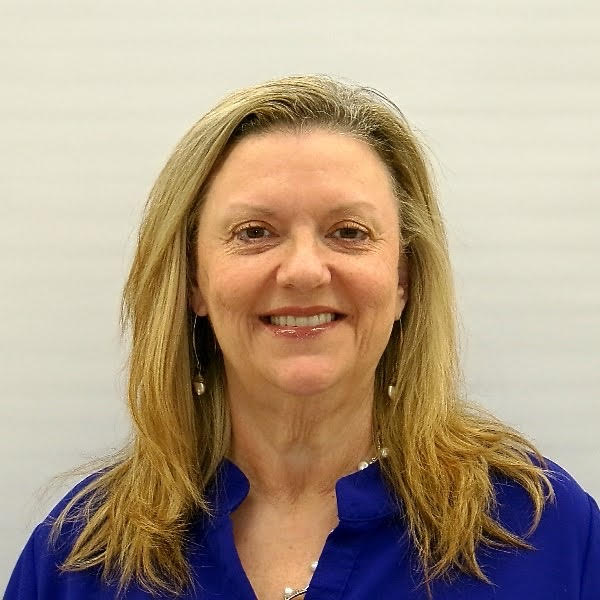2023 Update: Using Nursing Simulation to Replace Prelicensure Clinical Hours by U.S. State
The nursing profession continues their trajectory with the acceptance of clinical simulation as a substitute traditional clinical experiences. In 2014 the National Council of State Boards of Nursing (NCSBN) National Simulation Study published a landmark longitudinal, randomized, controlled multi-site study of simulation use in prelicensure nursing programs throughout the United States. The results from the NCSBN National Simulation Study revealed that high-quality simulation conducted by trained, dedicated simulation faculty could replace up to 50% of the traditional clinical hours for prelicensure nursing students without negative impact. This HealthySimulation.com article by Dr. Teresa Gore, past president of INACSL, will provide an update and the status of the US states regarding simulation use for clinical hours.
To obtain the same results as the NCSBN Simulation Study, Simulation Guidelines were developed. A set of guidelines were developed for simulation programs and another set of guidelines for simulation faculty. The NCSBN recommends following the Healthcare Simulation Standards of Best Practice developed by the International Nursing Association for Clinical Simulation and Learning (INACSL).
Update on the Status of Simulation Regulation – 2021
Sponsored Content:
The use of simulation in educational programs has risen substantially in the past decade. In 2021 An Update on the Status of Simulation Regulation revealed updates from 2014 to 2021.
- For RNs, the number of boards with specific regulation regarding simulation rose from 22 in 2014 to 38 in 2021, an increase of over 25%. The second question was, “What percentage of clinical experience hours may be replaced by simulation?” For RNs, the number of boards who specifically stated that no hours substitution was allowed declined from 5 to 1 while the number of boards who had the guideline recommendation of 50% as a substitution maximum rose from 1 to 22. For LPN/VNs the number of boards with specific regulation regarding simulation rose from 20 in 2014 to 33 in 2021, an increase of 20%.
- For LPN/VNs, the number of boards who specifically stated that no hour substitution was allowed declined from 3 to 0 while the number of boards who had the guideline recommendation of 50% as a substitution maximum rose from 0 to 21. I will note something that was not included in the numbers just presented.
Simulation Use During COVID-19
During the pandemic, over 15 jurisdictions issued statements and emergency orders specifically
addressing the use of simulation. Most of the orders involved relaxing some restrictions on the use of simulation by boards of nursing that already had specified regulations.
Sponsored Content:
COVID-19 led to emergency orders by state Boards of Nursing during the pandemic:
- Over 15 jurisdictions issued statements and emergency orders specifically addressing the use of simulation.
- Most of the orders involved relaxing some restrictions on the use of simulation by BONs that already had specified regulations.
- Six BONs removed or shifted caps on the permissible percentage of simulation hours that could be substituted for clinical hours.
Follow-Up Survey on Simulation Regulation
Curry-Lourenco and colleagues (2022) published the follow-up survey results related to the regulation of simulation in the US prelicensure nursing program. In ths article states that do not have simulation regulations include Alaska, Arkansas, Connecticut, Delaware, Hawaii, Idaho, Kansas, Maine, Maryland, Massachusetts, Montana, Nebraska, New Jersey, New York, North Dakota, Ohio, Oregon, Pennsylvania, Rhode Island, Utah, West Virginia, and Wyoming. INACSL has a simulation regulation map available for a visualization of the states and the percentage of simulation approved.
State Regulation Updates
New York: The latest state to address nursing simulation use in pre-licensure nursing is New York. In 2023, the New York Governor Kathy Hochul recently signed a landmark bill, A3076- A/S447-C. The legislative bill makes a significant step forward to enhance the quality of nursing education and address current nursing shortages through simulation replacing clinical training for up to one-third of the students clinical experiences. The legislative bill helps to address limited clinical assess for students to increase enrollment capacity as more nurses near retirement, and/or have left nursing due to burnout. Congratulations New York!
Arkansas: In May 2022, Arkansas State Board of Nursing Rules states “The curriculum plan for registered nursing and practical nursing education programs may include the use of simulation as a substitute for traditional clinical experiences, not to exceed fifty percent (50%) of its clinical
hours in each course. A program that uses simulation shall demonstrate the use of current standards of best practice for simulation and provide evidence of compliance.”
Connecticut: The Regulations of Connecticut State Agencies Nursing Programs and Licensure Regulations General states, “The minimum length of the nursing component of the program must be equivalent to four (4) fifteen (15) week academic semesters and contain a minimum of thirty-five (35) semester hours of credit in nursing. Fifty percent (50%) of contact hours shall be in supervised direct client care experiences, observational experiences and simulated experiences appropriate to the program’s educational outcomes, and laboratory experiences for the acquisition and practice of clinical nursing skills.”
Delaware: In Delaware, March 2023, the Board of Nursing 2.4.1.7.4 states, “A minimum of 200 hours of clinical experience is required for LPN students and a minimum of 400 hours of clinical experience is required for RN students. … Simulation – high fidelity or standardized patient – clinical scenarios may be substituted for traditional clinical experiences but must not exceed 50% of the program’s clinical hours per course.”
Idaho: In February 2021, the Idaho Board of Nursing Guidance Statement for Use of Simulation in Pre-Licensure Nursing Education states, “Nursing education administrators and faculty members are responsible for assessing their programs readiness to use simulation experiences in lieu of traditional clinical experiences. The program shall have an organized framework that provides adequate resources to support simulation experiences. High-quality simulation experiences may substitute up-to 50% of traditional clinical experience in each course. One hour of simulated patient care, including the pre-briefing and debriefing time, is equal to one hour of traditional clinical experience. The faculty to student ratio must not exceed 1:10 as required with all traditional clinical experiences. Group size is to be determined by the scenario objectives. Each student must have a defined and active role during the simulation.”
Kansas: In Kansas, the Board of Nursing has a Simulation Scenario Library. However, no regulations regarding the use of simulation in prelicensure nursing programs were found on the website. The same is true for Massachusetts; The Massachusetts Nursing Initiative – Simulation Scenario Library.
Maine: In 2019, the Maine Board of Nursing The Regulations for Approval of Prelicensure Nursing Education Programsstates, “A prelicensure NEP may use simulation as a substitute for traditional clinical experiences, not to exceed fifty percent (50%) of its clinical hours. An NEP that uses simulation shall adhere to the standards set by the National Council of State Boards of Nursing (NCSBN) Simulation Guidelines for Prelicensure Nursing Education Programs.”
Maryland: The Maryland Board of Nursing website has use of simulation with COVID-19 pandemic was allowed. However, no documentation on approval of simulation as clinical hours was found on the website.
Montana: In Montana, 24.159.670 Curriculum Goals and General Requirements for Programs states, “… (6) For each course utilizing simulation, no more than 50 percent of clinical hours shall be replaced with simulation hours. Upon request by a program, the board may temporarily allow all programs to exceed the 50 percent cap on simulation due to extenuating circumstances such as a state or national emergency.” The website indicates this is still current.
Nebraska: In August 2021, the Nebraska Department Health and Human Services Title 172 Professional and Occupational Licensure ,009.03 Learning Experiences states, “The curriculum must provide for learning experiences that prepare the student to identify and intervene in actual or potential health problems of individuals, families, or groups. Nursing actions must be directed toward maintaining or improving health status, based on the nursing assessment and through the execution of nursing care or therapeutic regimens prescribed by any person lawfully authorized to prescribe. Learning experiences, methods of instruction, and evaluation of student
accomplishment will: (F) Provide clinical experiences such as observation, simulation, staff nurse supported, dedicated education unit, adjunct or preceptor, that are supervised by qualified
Faculty;”…
Ohio: In February 2022, Ohio Regulative Code Rule 4723-5-13 Curriculum for a registered nursing education program states, “(F) The program may move hours between laboratory and clinical experiences within a course offering provided the laboratory and clinical experiences are sufficient for student opportunity to achieve the behavioral objectives and requirements established in the course. (G) The curriculum shall include clinical experiences in providing care to patients across the lifespan. The only periods of life span excepted are those related to the obstetrical patient, the immediate newborn, and pediatrics. Programs utilizing high fidelity simulation or mid or moderate fidelity simulation obstetrical, immediate newborn, or pediatric simulation laboratory experiences may use those experiences instead of providing clinical experience in those periods of life span.”
Oregon: In August 2022, the Oregon Board of Nursing Chapter 851 states, “3) Nursing practice experience includes the clinical component of the nursing curriculum and must: (a) Occur in a variety of settings. (b) Include sufficient direct care and final clinical practicum hours to meet course and program outcomes and, at minimum, provide 51% of these hours across the nursing education program except as provided in OAR 851-021-0050 (4)(l). (c) Integrate a combination of four modalities to refine competencies at the appropriate program level. The clinical component of the nursing curriculum includes the modalities of direct care, simulation, and final clinical practicum.” Stipulations and guides are provided for simulation use.”
Pennsylvania: In March 2020 during COVID-19 pandemic, the Pennsylvania Board of Nursing approved the use of simulation, “The use of simulation hours and their ratio to clinical hours must be based on national standards such as put forth by the National Council of State Boards of Nursing (NCSBN) or International Association for Clinical Simulation and Learning (INACSL).” However, updated information and revision were not located on the website.
West Virginia: In April 2021, the West Virginia Board of Nursing 19-1-8. Curriculum. 8.3. Simulation states, “Nursing education programs may use simulation as a substitute for traditional clinical experience.”
View the HealthySimulation.com LEARN CE/CME Platform Webinar Integrating Quality Clinical Simulation Into Your Nursing Program to learn more!
Future of Nursing Simulation
As noted above, the use of simulation in pre-licensure nursing education is growing. I think future studies, we’re going to be working on looking at virtual reality and things like that. But, for the moment this was strictly related to in-person simulation. Simulation use in graduate nursing programs. The National Organization of Nurse Practitioner Faculties (NONPF) developed Simulation Guidelines and Best Practices for for Nurse Practitioner Programs.
Read Dr. Kim Baily’s 2019 article on this topic US State Nursing Simulation Regulations for Prelicensure Nursing Programs.
Learn More About Nursing Simulation Scenarios!
Teresa Gore, PhD, DNP, APRN, FNP-BC, CHSE-A, FSSH, FAAN – Dr. Gore has experience in educating future nurses in the undergraduate and graduate nursing programs. Dr. Gore has a PhD in Adult Education, a DNP as a family nurse practitioner, and a certificate in Simulation Education. Dr. Gore is an innovative, compassionate educator and an expert in the field of healthcare simulation. In 2007l Teresa started her journey in healthcare simulation. She is involved in INACSL and SSH. She is a Past-President of INACSL and is a Certified Healthcare Simulation Educator Advanced (CHSE-A). In 2018, she was inducted as a Fellow in the American Academy of Nursing (FAAN). In 2021, she was inducted as a Fellow in the Society of Simulation in Healthcare Academy (FSSH) and selected as a Visionary Leader University of Alabama at Birmingham School of Nursing Alumni. During her career, Dr. Gore has led in the development and integration of simulation into all undergraduate clinical courses and started an OSCE program for APRN students. Her research interests and scholarly work focus on simulation, online course development and faculty development. She has numerous invited presentations nationally and internationally on simulation topics.
Sponsored Content:






















